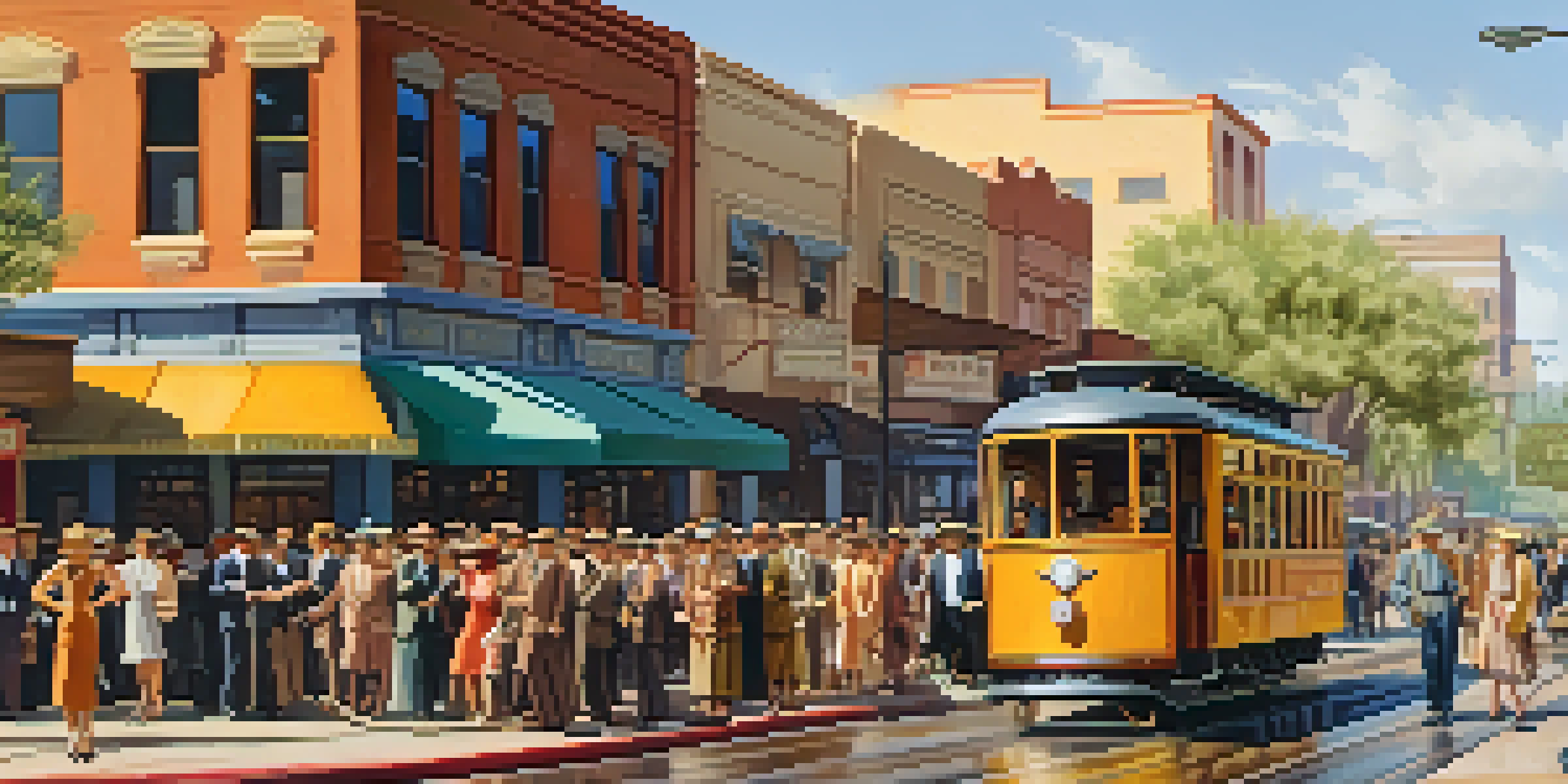The Impact of the Great Depression on Phoenix's Transit System

Overview of Phoenix's Transit System Before the Depression
Before the Great Depression, Phoenix boasted a rapidly growing transit system that included streetcars and buses. This system was crucial for connecting residents to jobs and services, reflecting the city's expansion during the 1920s. The bustling streets were filled with streetcars, offering affordable transportation options, and helping shape the city’s urban landscape. As Phoenix grew, so did the demand for reliable transit, setting the stage for future challenges.
The Onset of the Great Depression and Its Immediate Effects
With the stock market crash of 1929, the Great Depression cast a shadow over cities across America, including Phoenix. The economic downturn led to significant job losses, which in turn reduced the number of riders using public transportation. As people tightened their belts, the once-busy streetcars saw a sharp decline in passengers, prompting transit authorities to reconsider their services. This period marked a drastic shift, as the need for public transit dwindled amid rising unemployment.
Transit System Decline During Depression
The Great Depression caused a sharp decline in public transit ridership in Phoenix, leading to significant budget cuts and service reductions.
Budget Cuts and Service Reductions in Transit
Faced with dwindling revenue, the Phoenix transit system had to make painful decisions, including budget cuts and service reductions. Many streetcar lines were either discontinued or altered to save costs, leaving some neighborhoods isolated from the city’s core. The reduced frequency of buses and streetcars meant longer waits for riders, further discouraging their use. With fewer options available, many residents turned to walking or carpooling, fundamentally changing the way people navigated the city.
The Impact on Workers and Employment in Transit
The Great Depression not only affected transit services but also the livelihoods of those who worked in the system. Many transit employees faced layoffs or reduced hours, leading to financial instability for their families. This struggle mirrored the broader economic hardships faced by many Americans during this time. As workers rallied for better conditions and job security, the transit system became a microcosm of the larger labor movement.
Community Resilience and Adaptation
In response to transit challenges, Phoenix residents developed grassroots solutions like carpooling to support one another during tough times.
Community Responses and Adaptations to Transit Changes
In response to the challenges posed by the Great Depression, the Phoenix community began to adapt in inventive ways. Local organizations and community leaders emerged to support those affected by the declining transit services. Some residents initiated carpooling efforts and formed informal networks to help each other reach work and essential services. This grassroots movement highlighted the resilience of the community and its ability to come together in tough times.
Government Interventions and New Deal Programs
To combat the economic downturn, the federal government introduced various New Deal programs aimed at job creation and infrastructure improvement. In Phoenix, these initiatives included funding for public works projects that revitalized the transit system. New bus routes were introduced, and streetcars were updated, which not only improved service but also provided much-needed jobs. This government intervention marked a turning point in the city's approach to public transportation.
Government Support Revitalizes Transit
New Deal programs provided funding and improvements that revitalized Phoenix's transit system, showcasing the importance of government intervention in times of crisis.
Long-Term Changes to Phoenix's Transit Landscape
The Great Depression left a lasting mark on Phoenix's transit system, prompting long-term changes that can still be seen today. The experience of the 1930s reshaped urban planning and transit policies, emphasizing the need for resilience in public services. As Phoenix recovered, the lessons learned from this era influenced how the city approached transit development in the following decades. The evolution of the transit system became a testament to the strength and adaptability of a community facing adversity.
Conclusion: Lessons from the Great Depression for Today
Reflecting on the impact of the Great Depression on Phoenix's transit system offers valuable lessons for the present. The importance of adaptable public transit services is more relevant than ever, especially in times of economic uncertainty. As cities continue to grow and evolve, understanding historical challenges can guide future improvements in transit systems. Ultimately, the resilience shown during the Great Depression serves as a reminder of the power of community and innovation in overcoming obstacles.